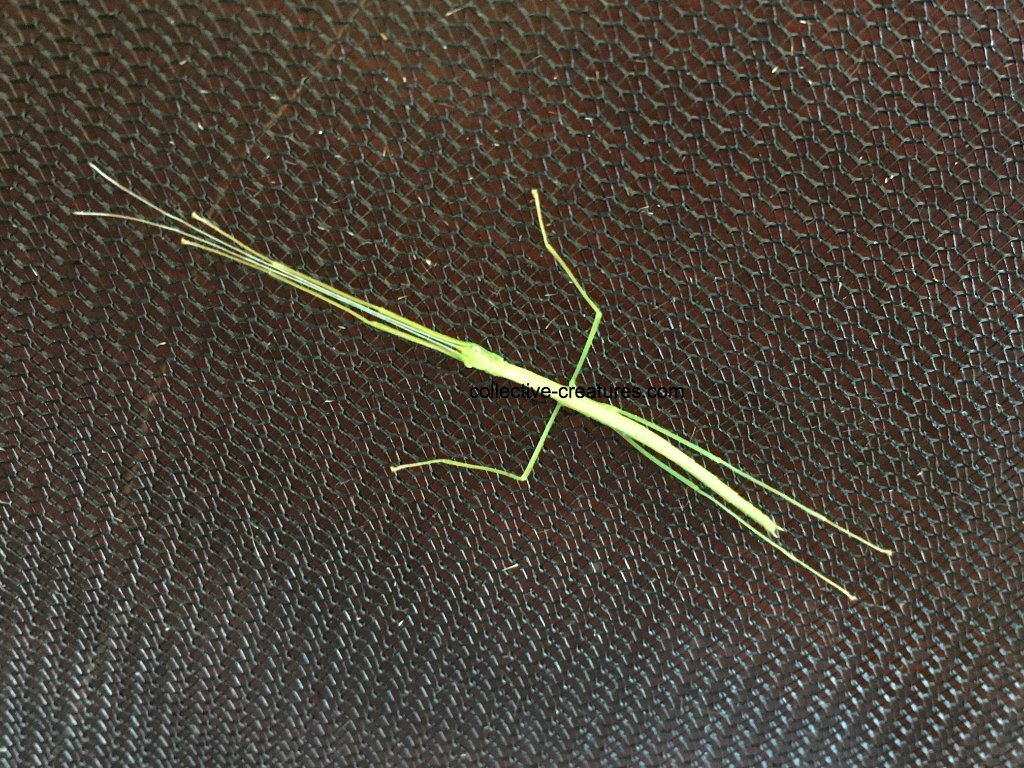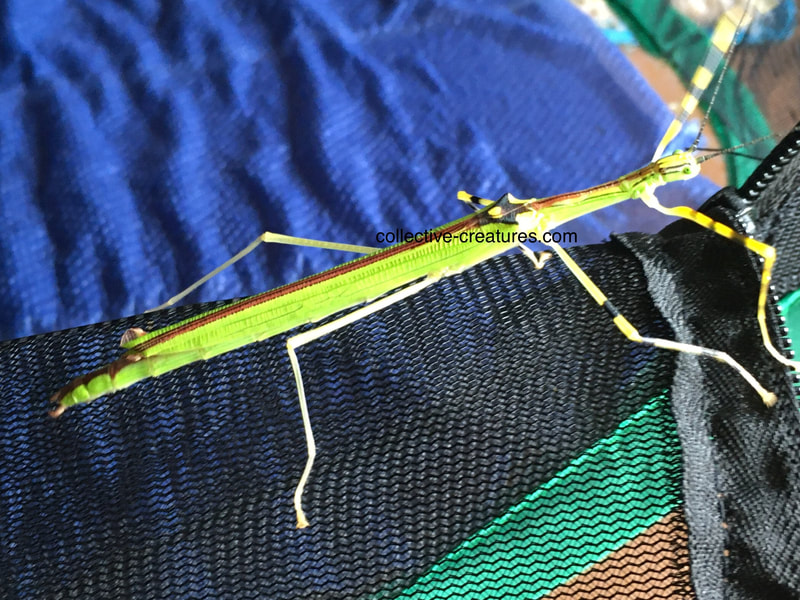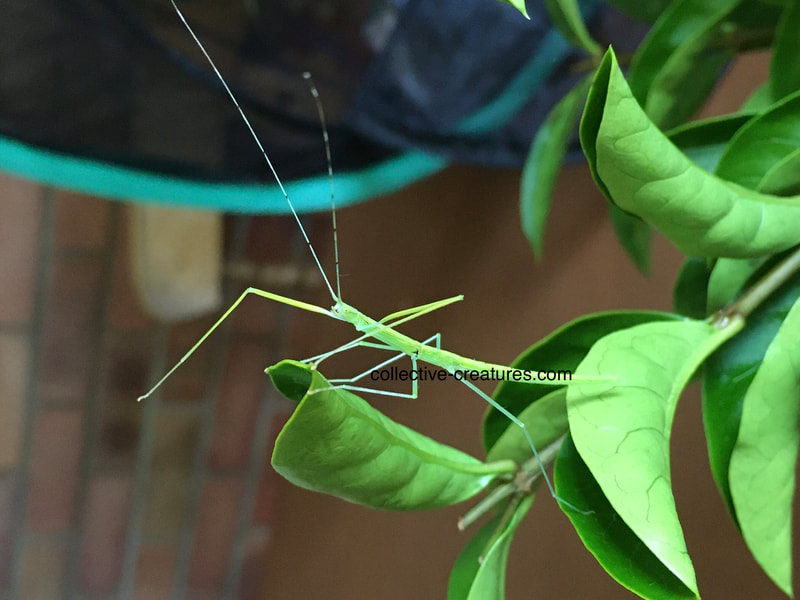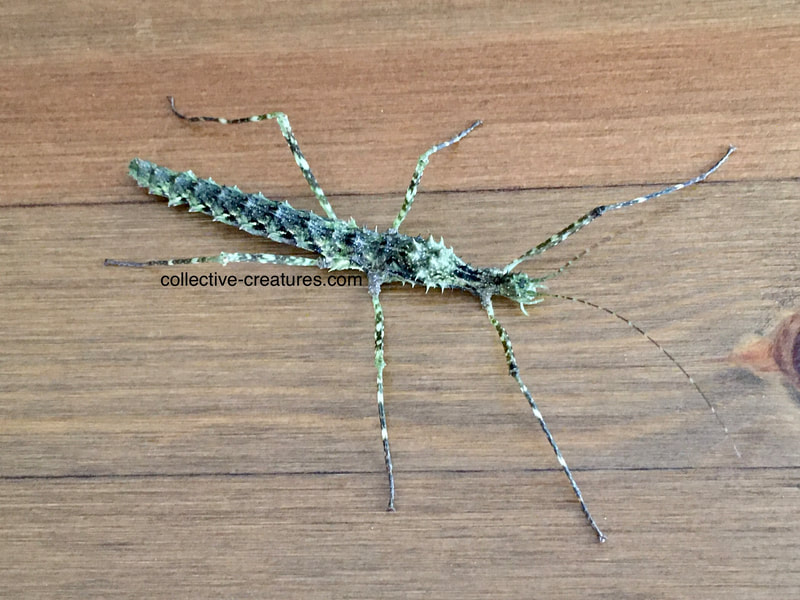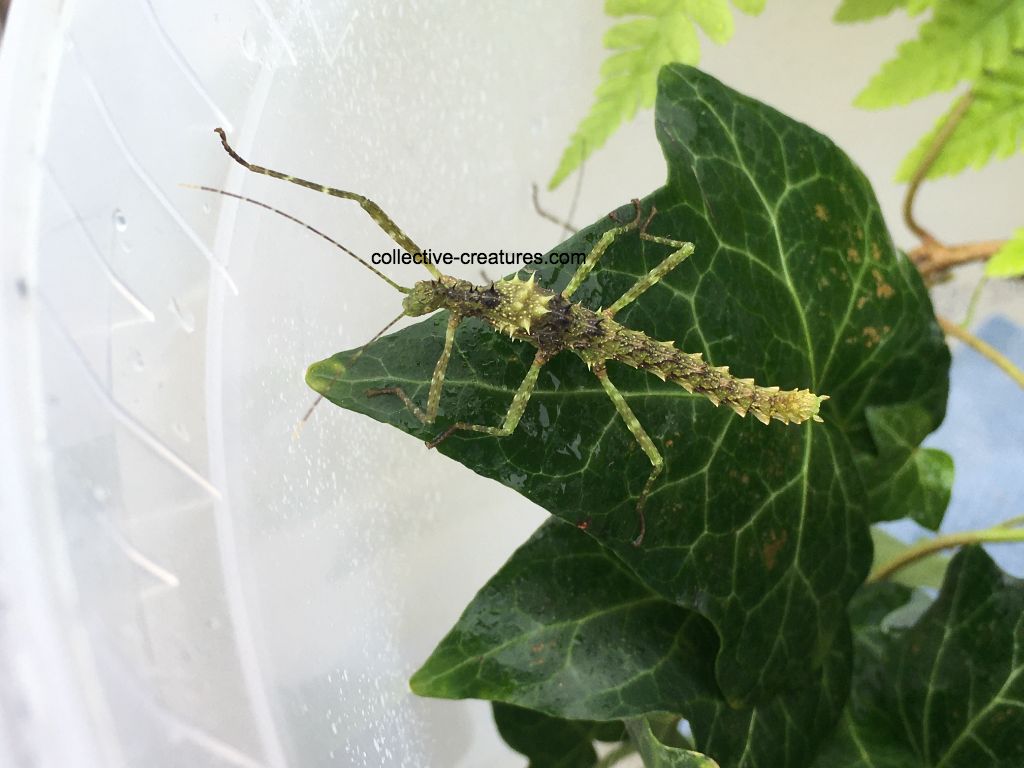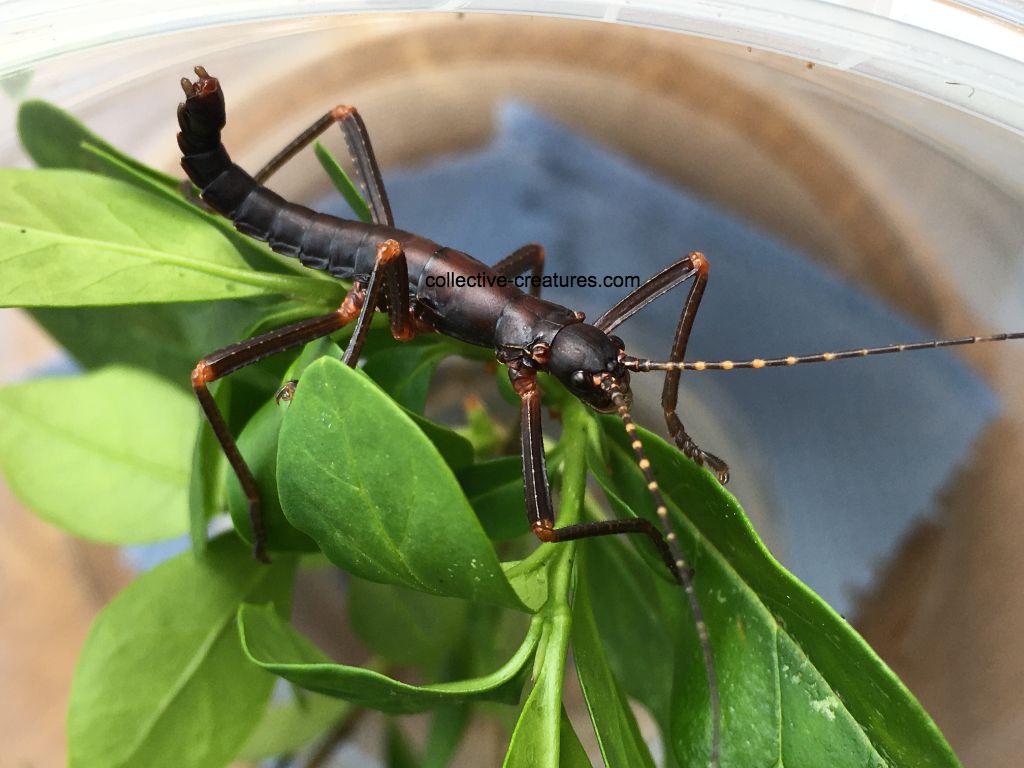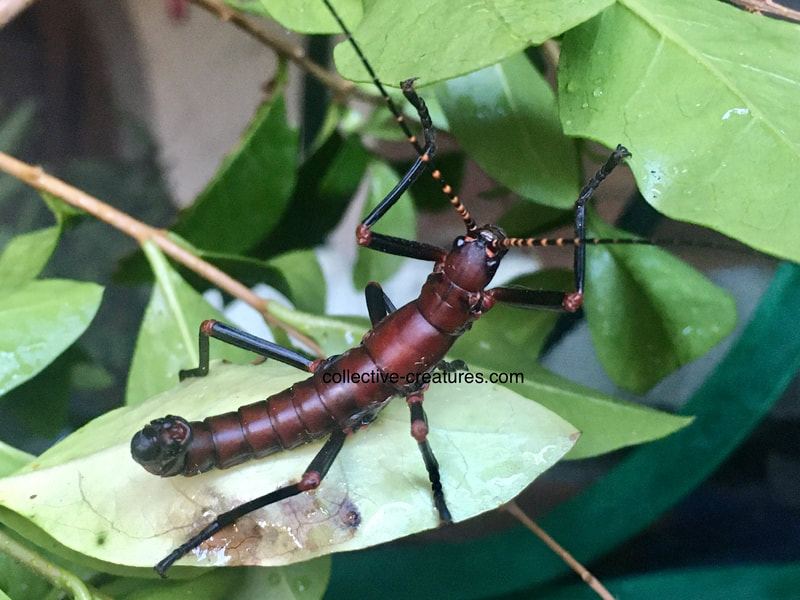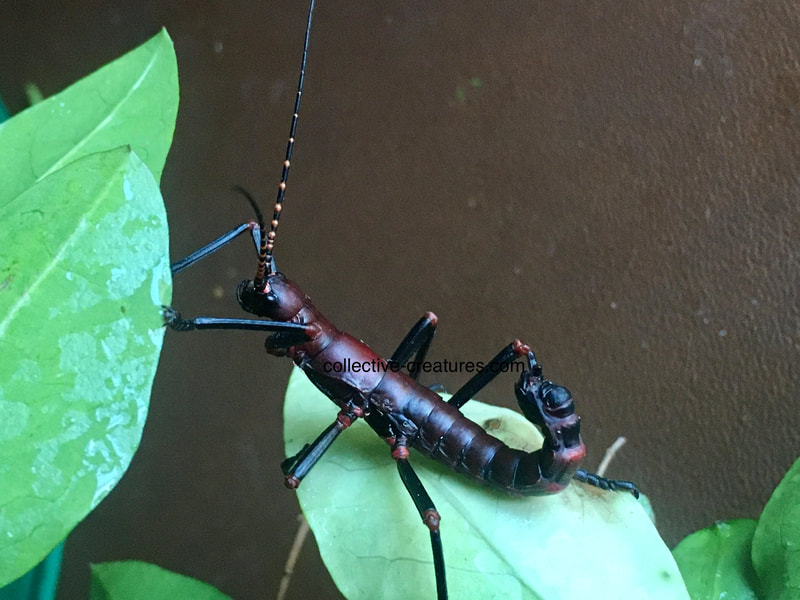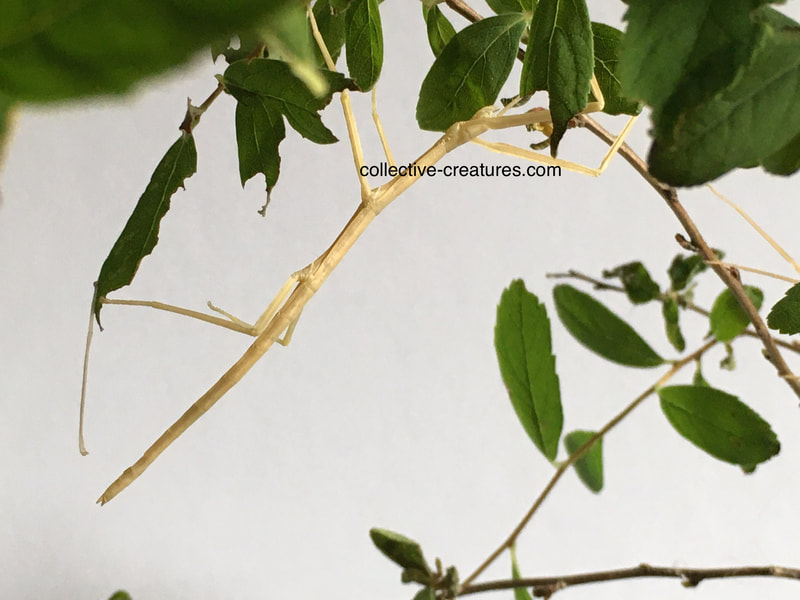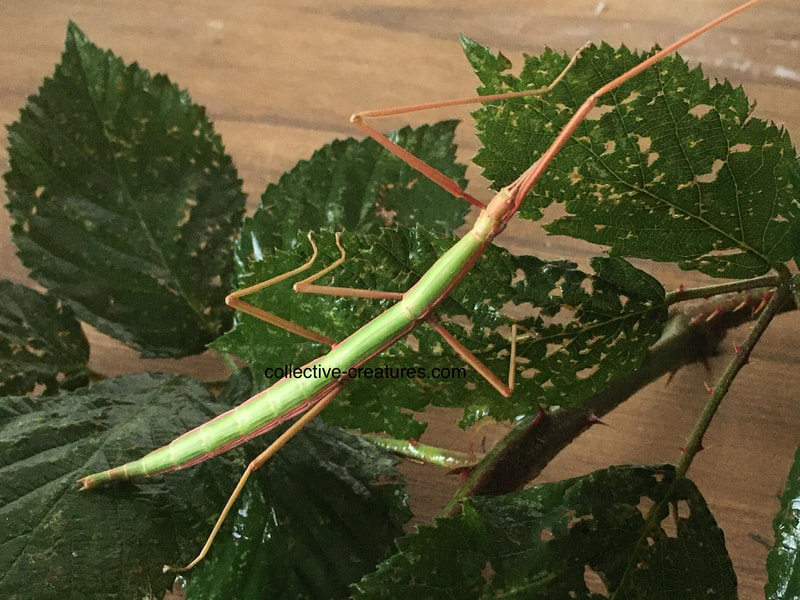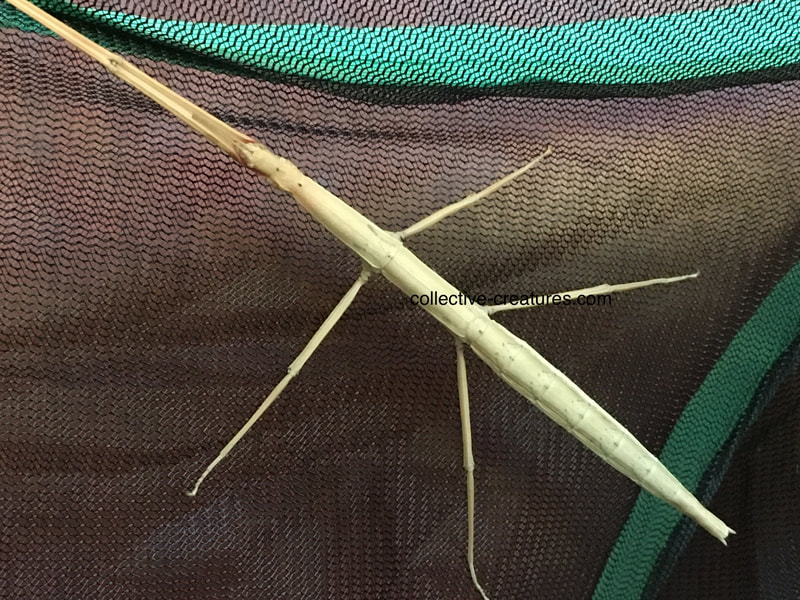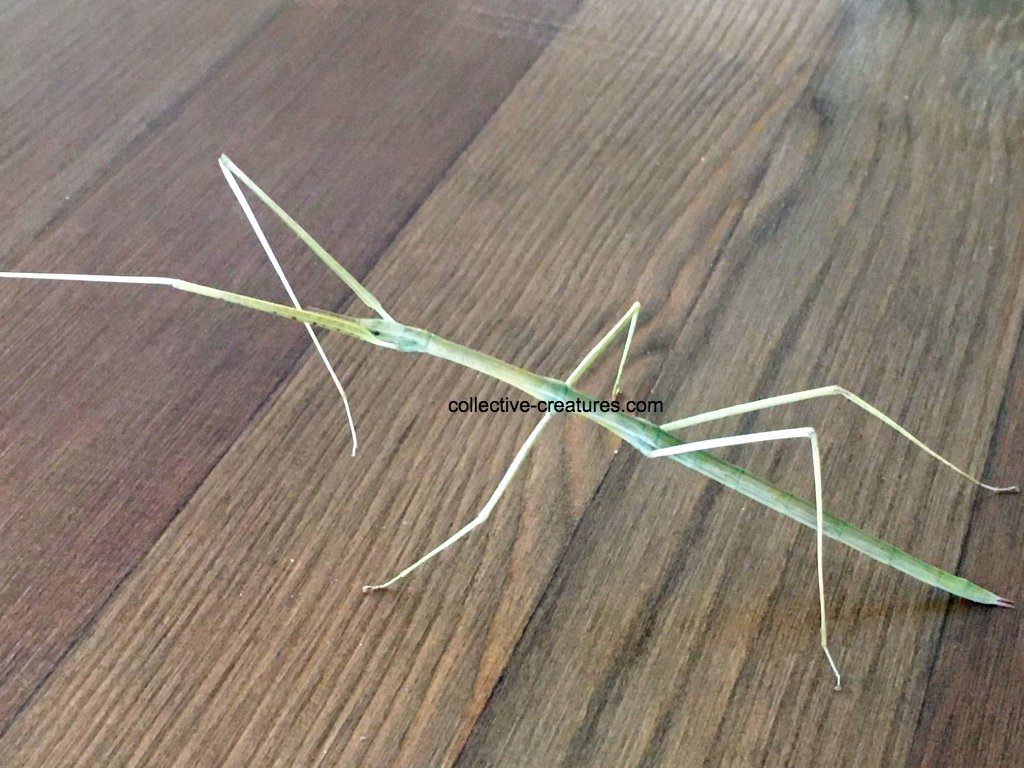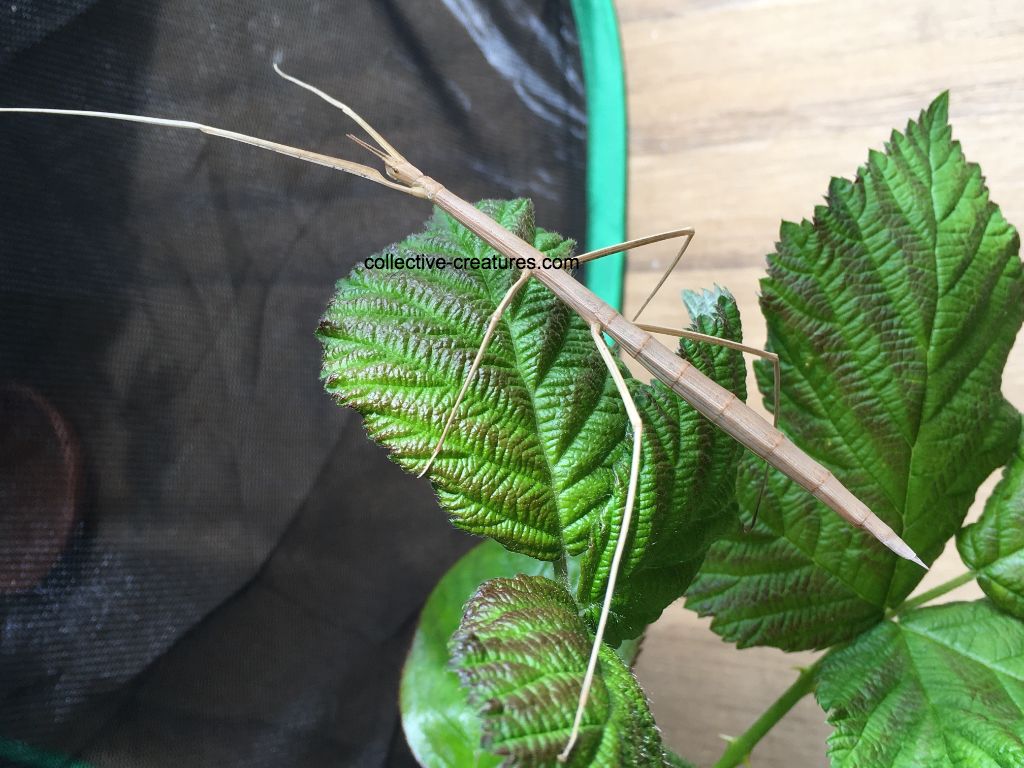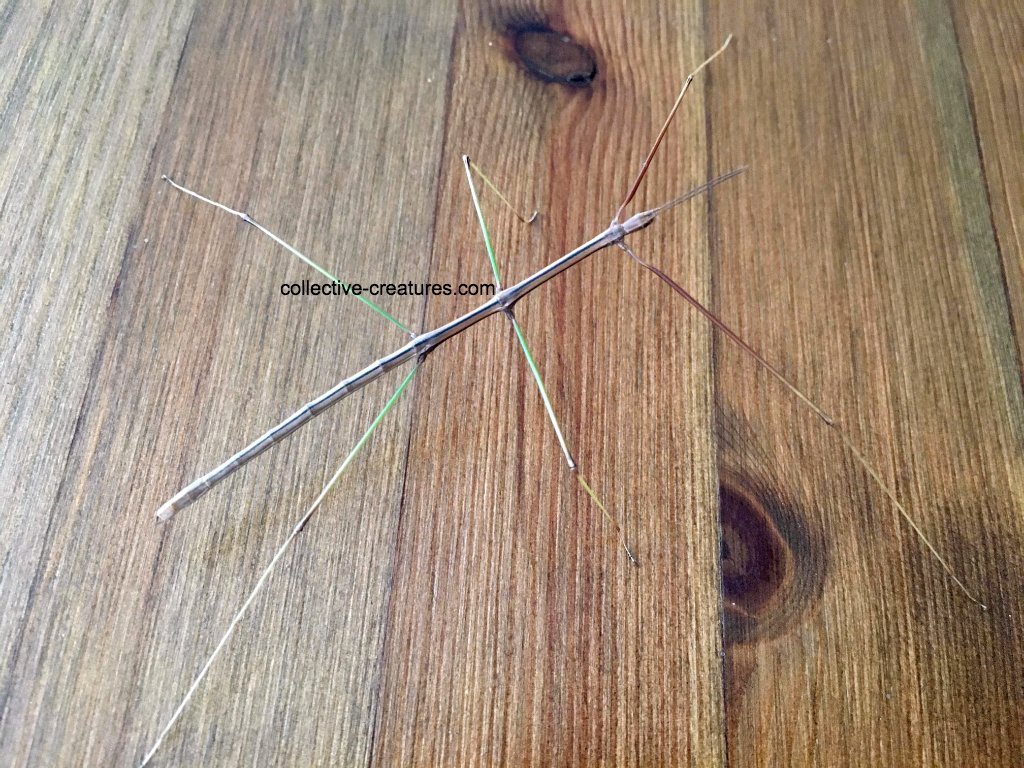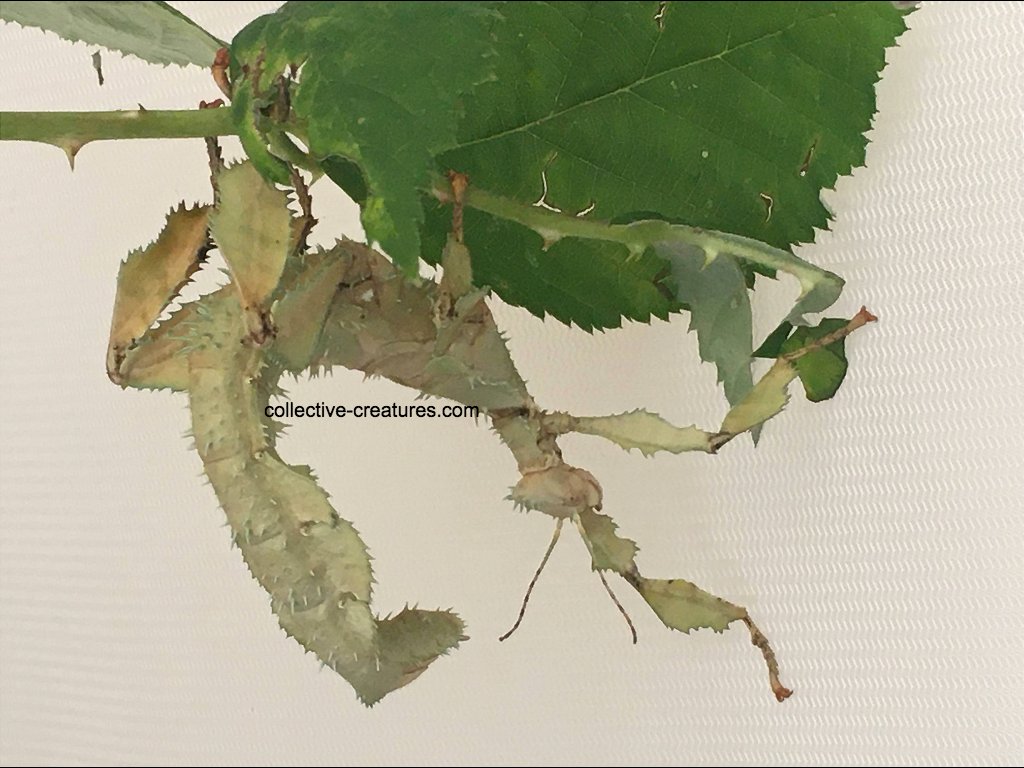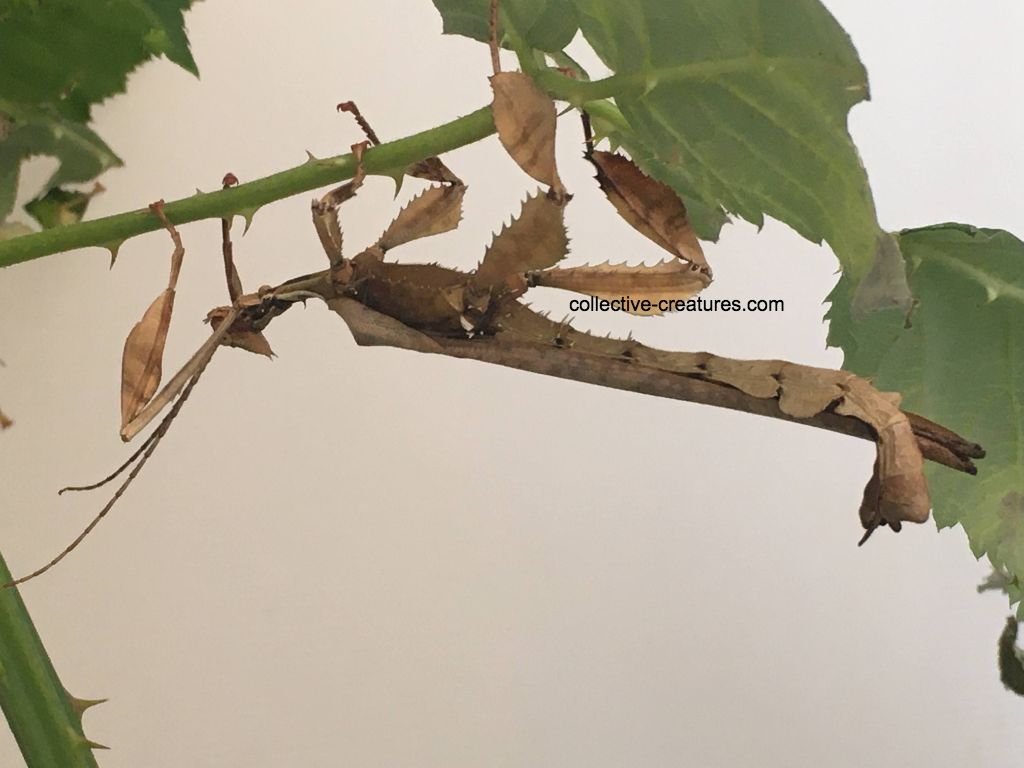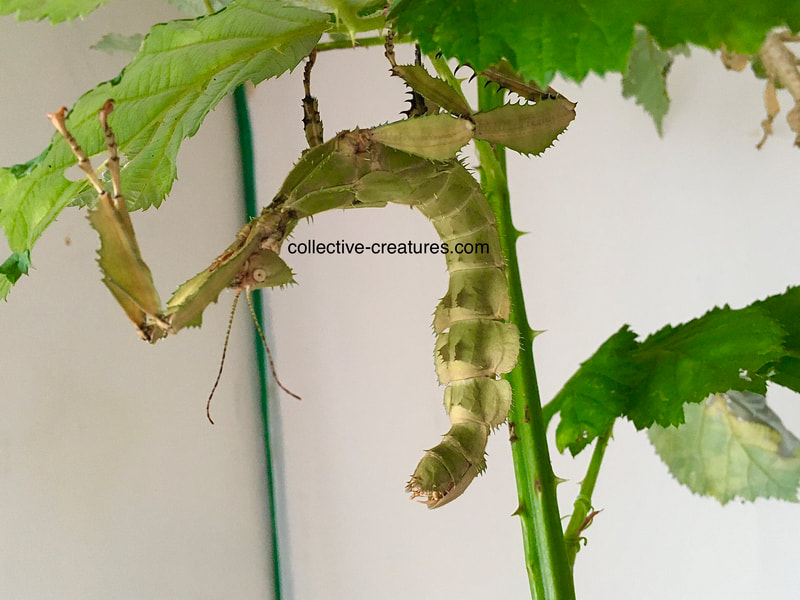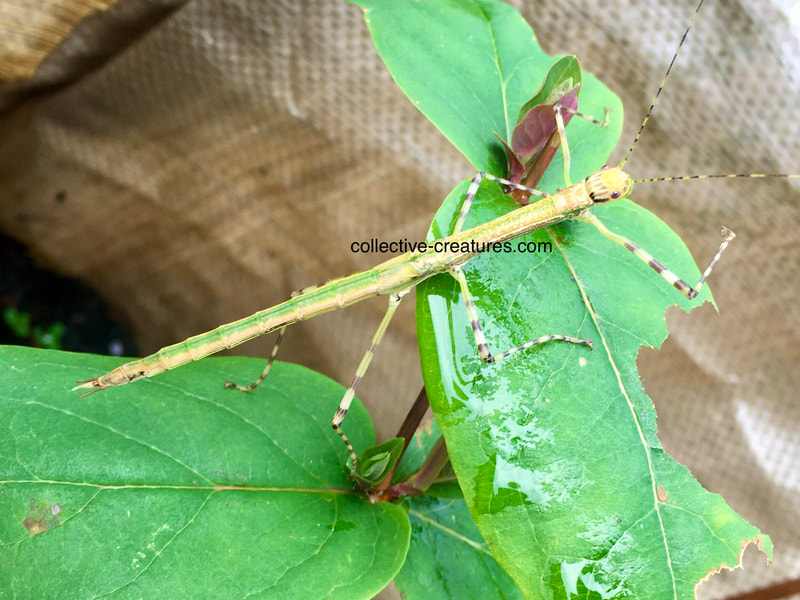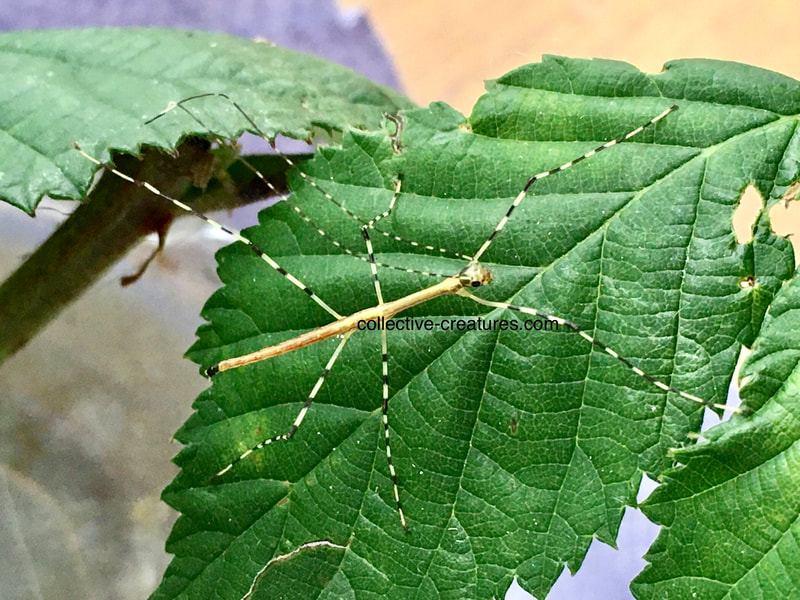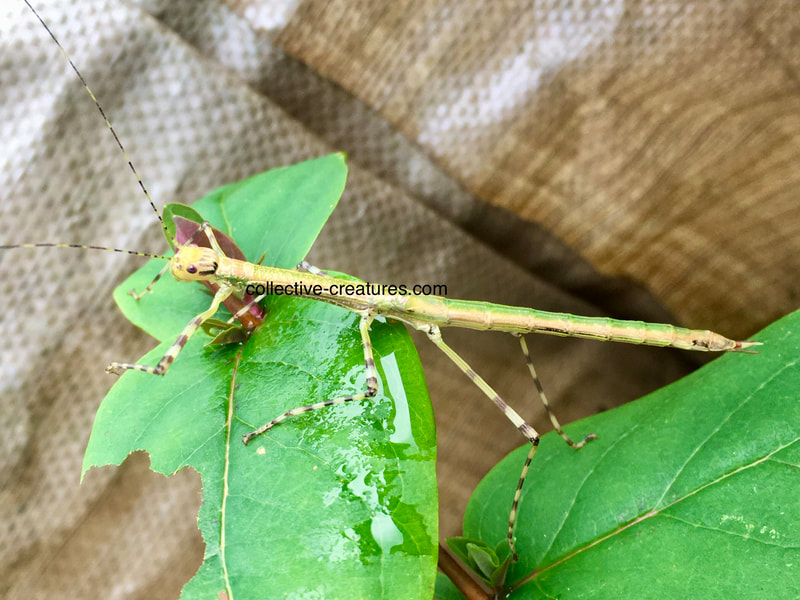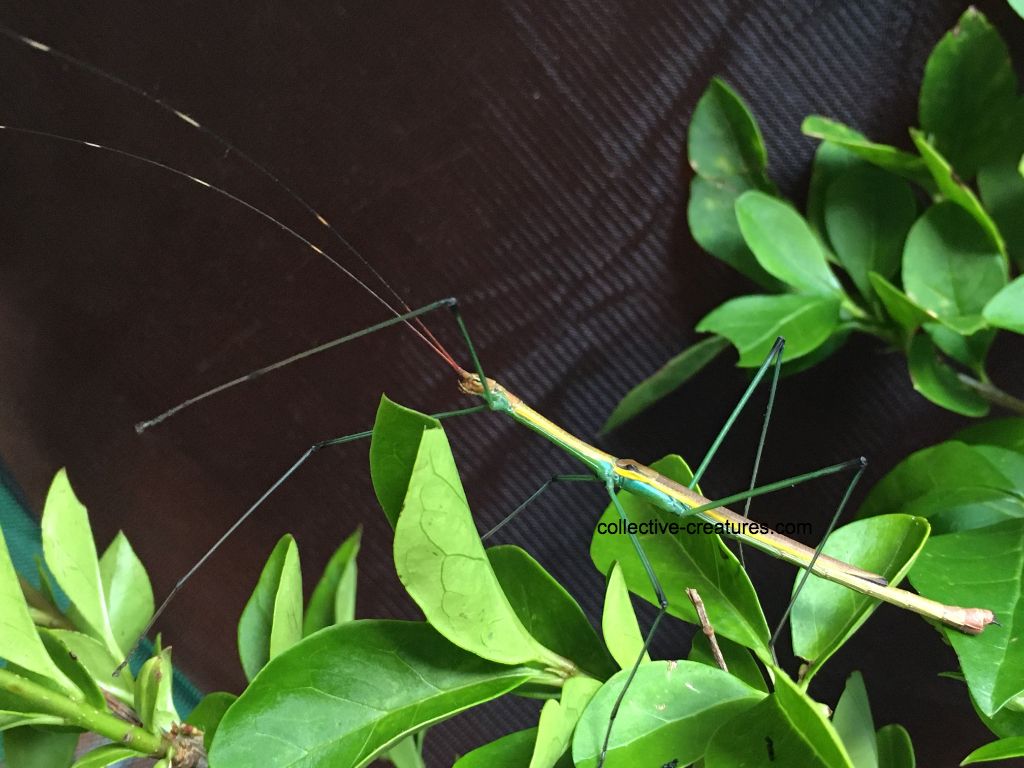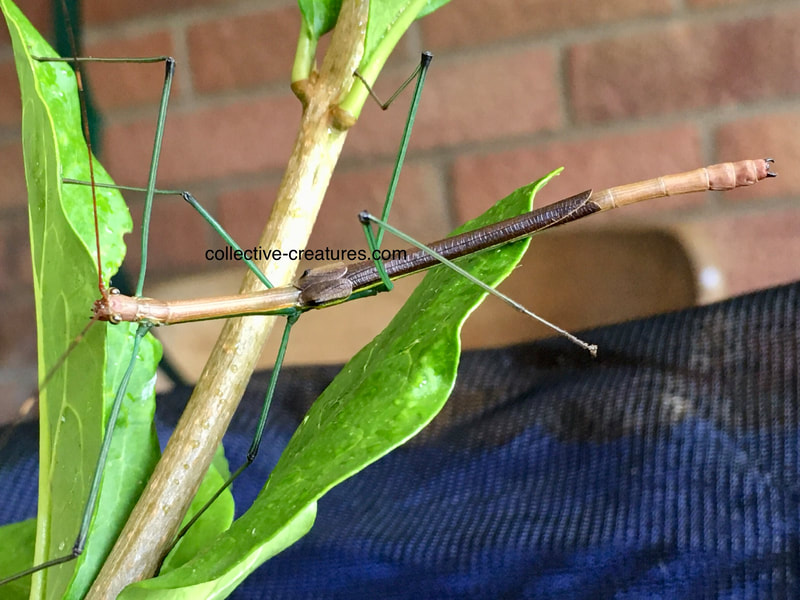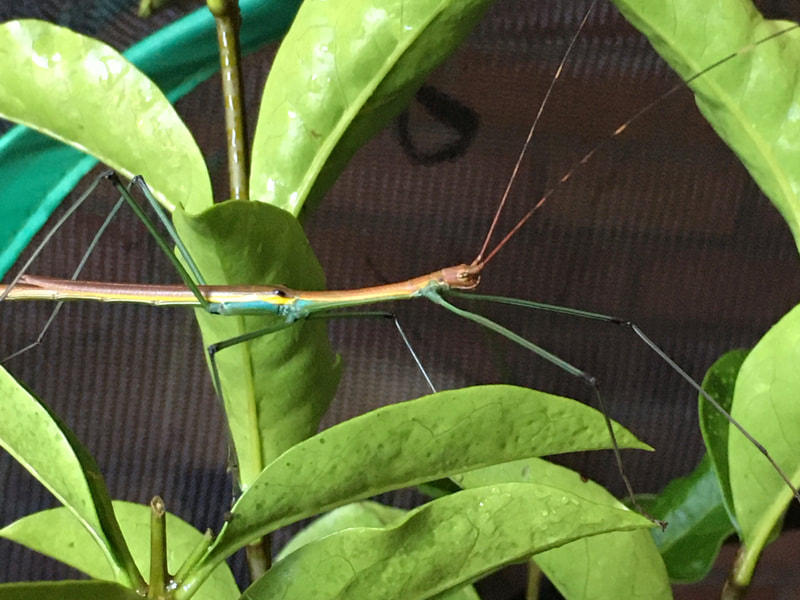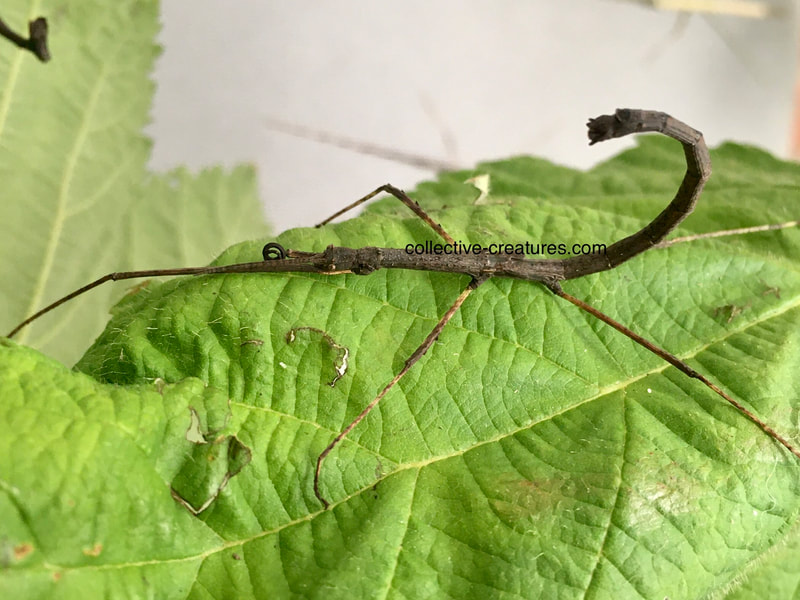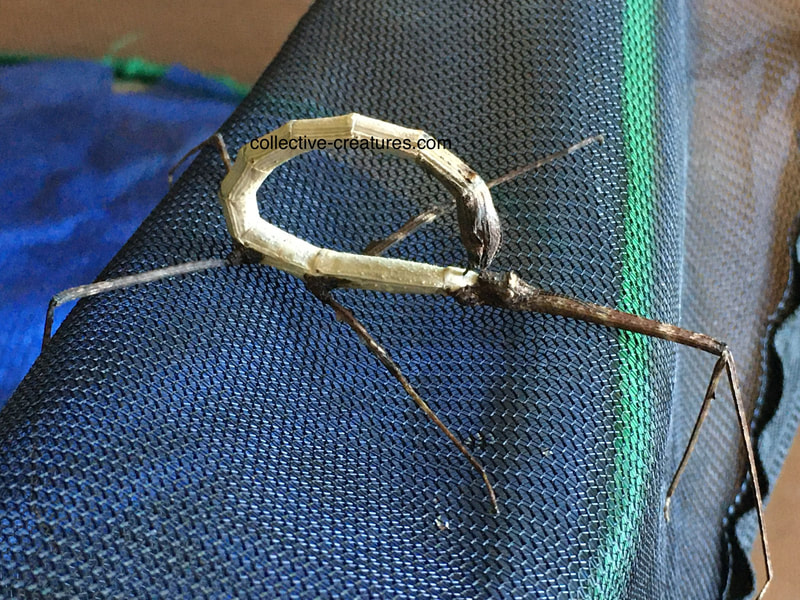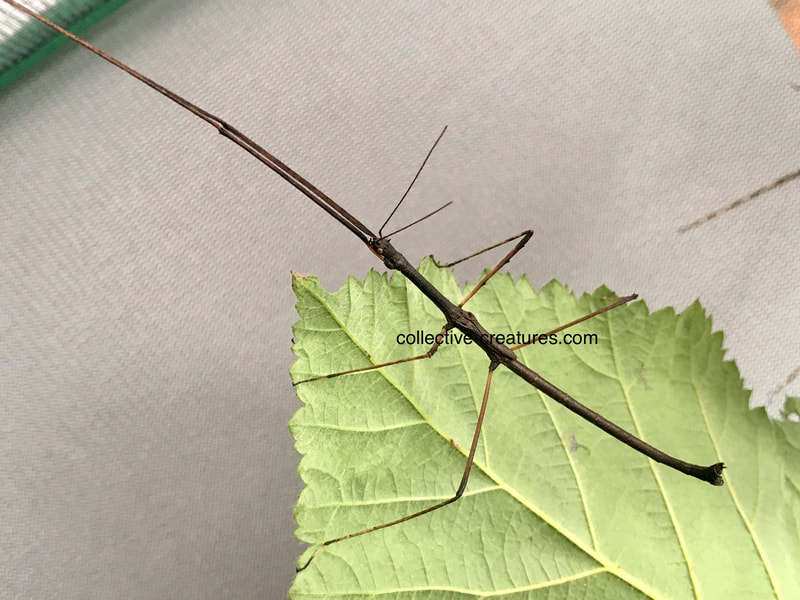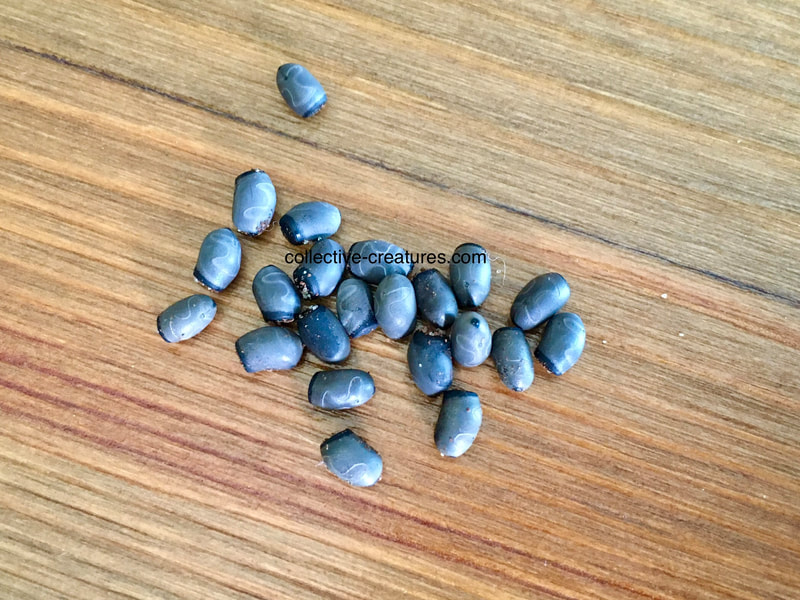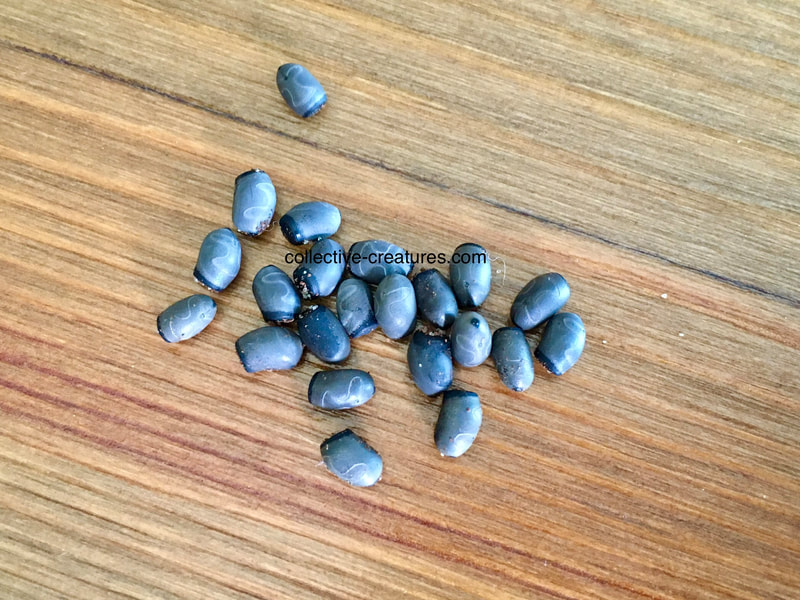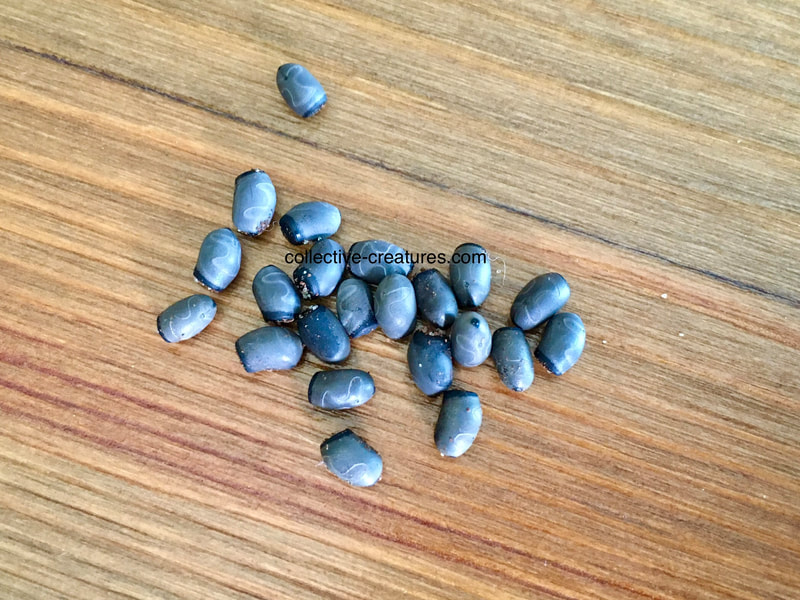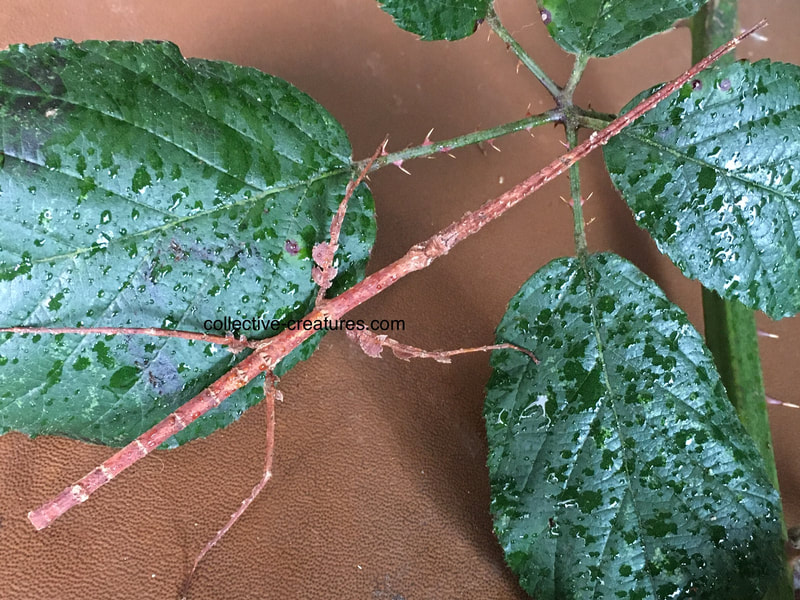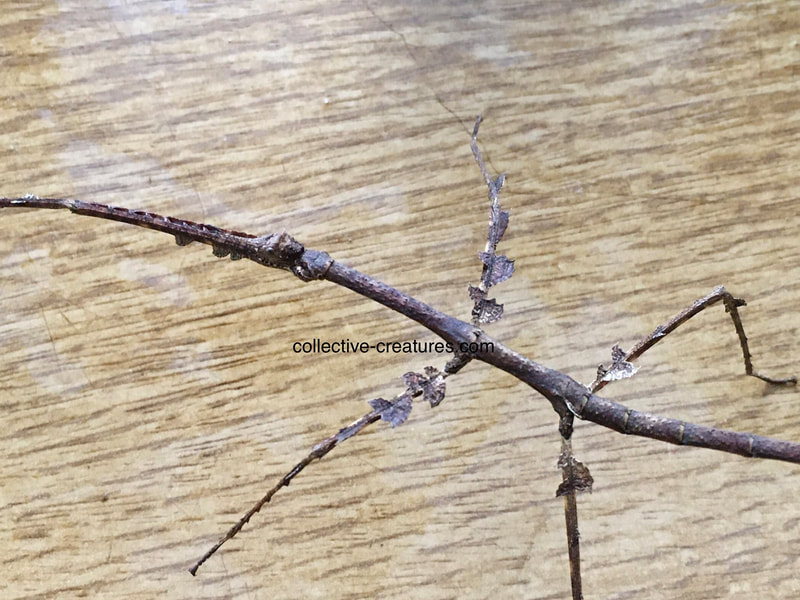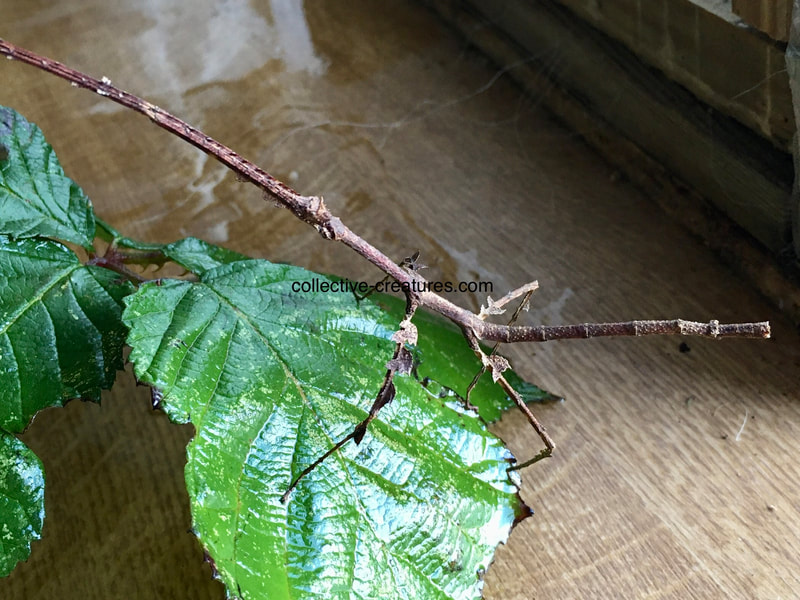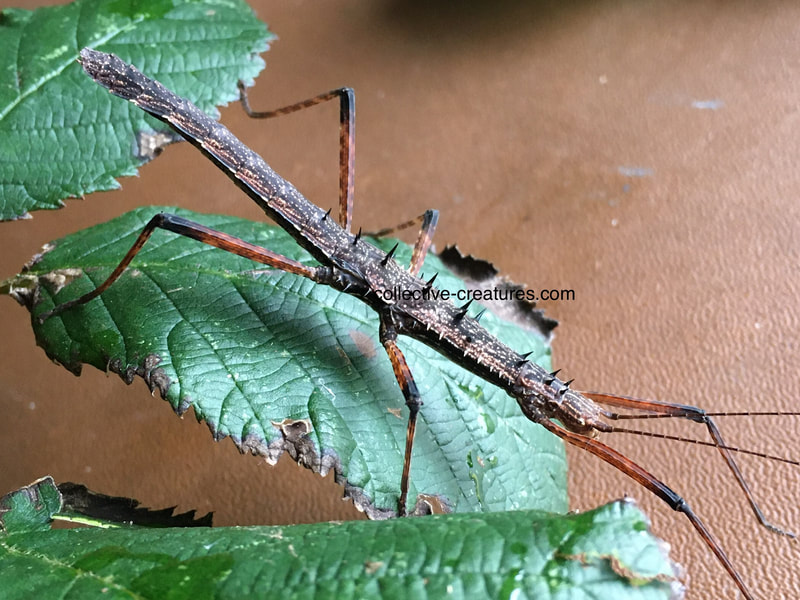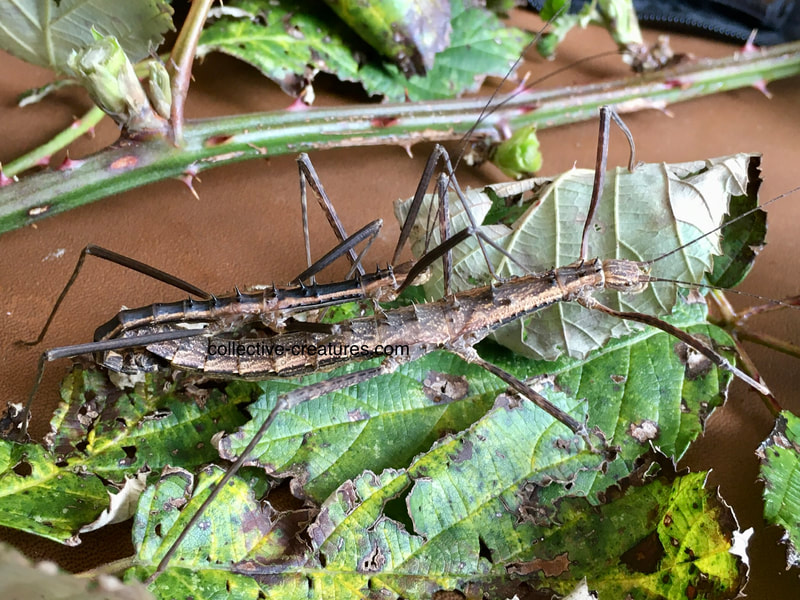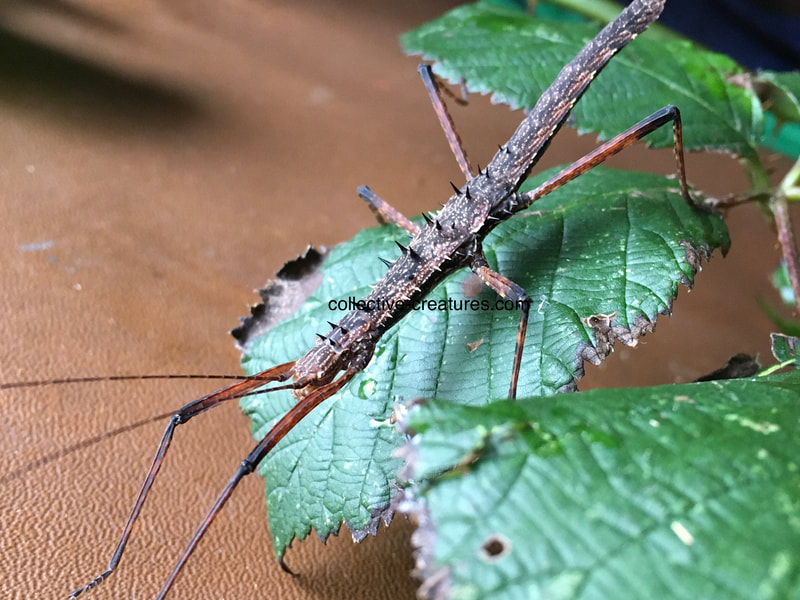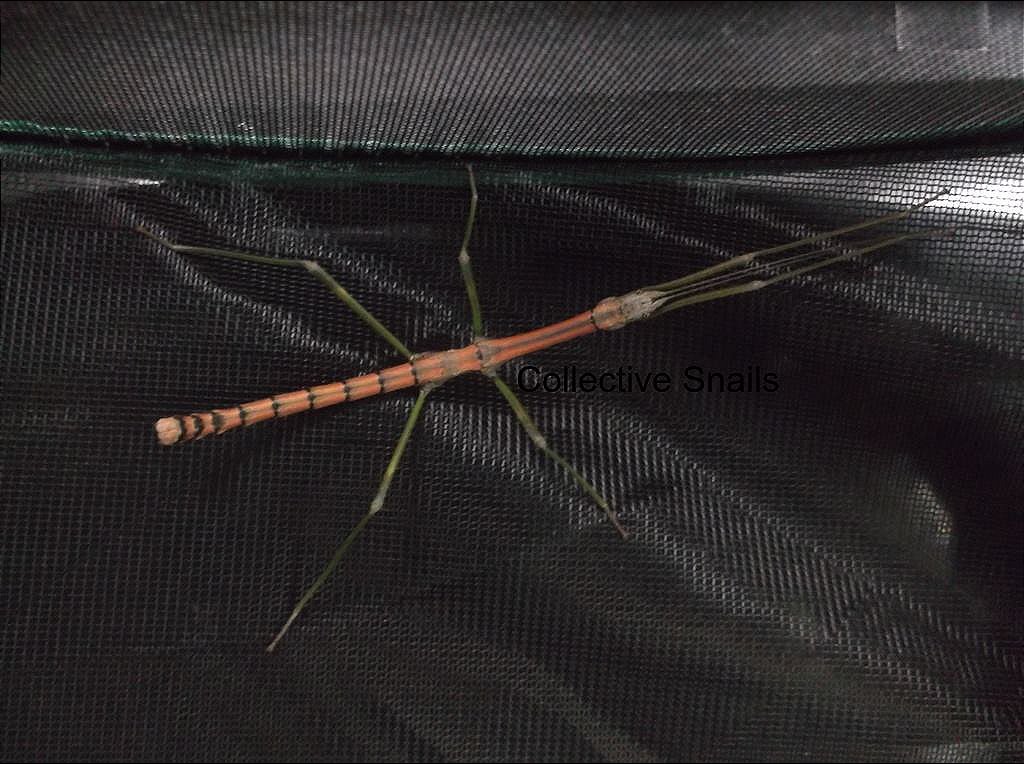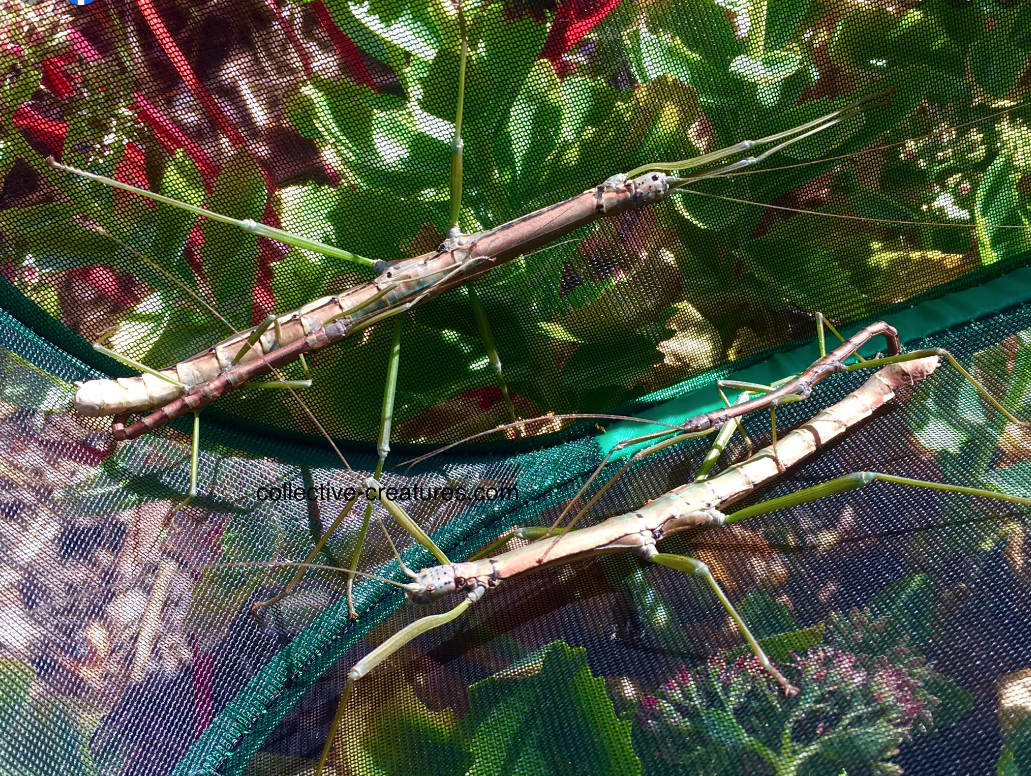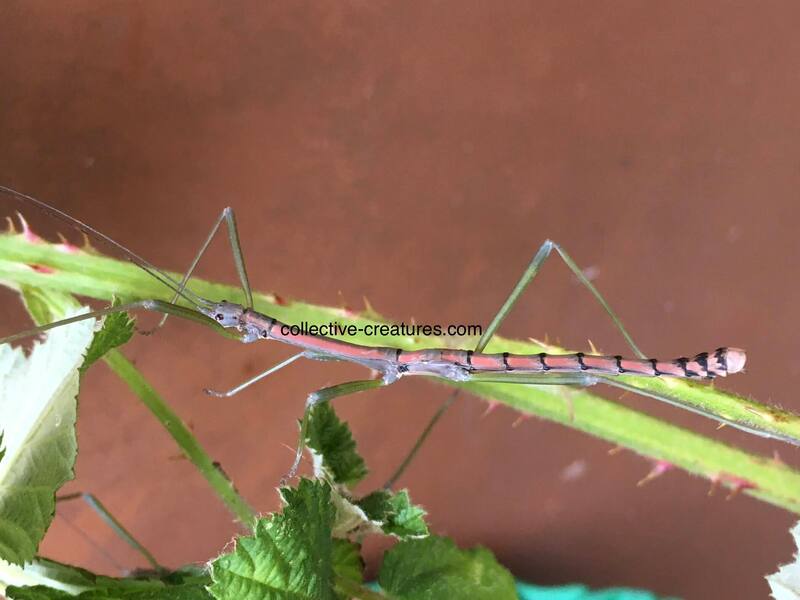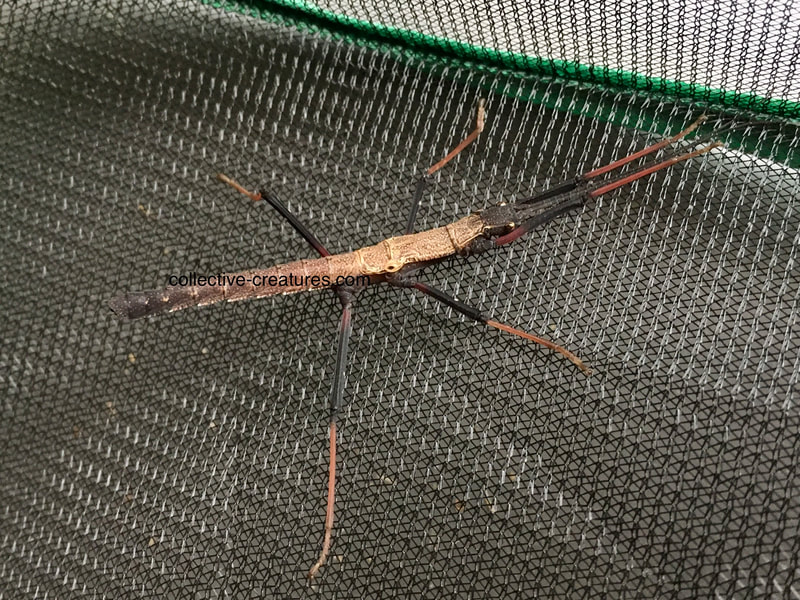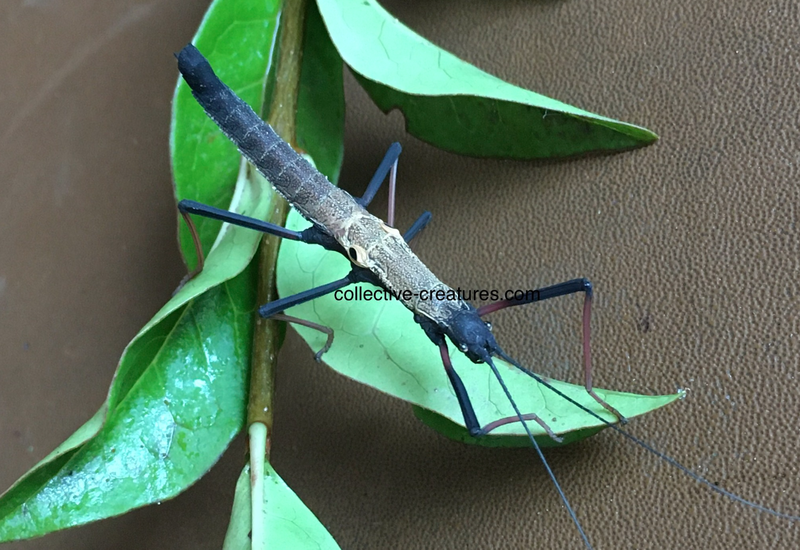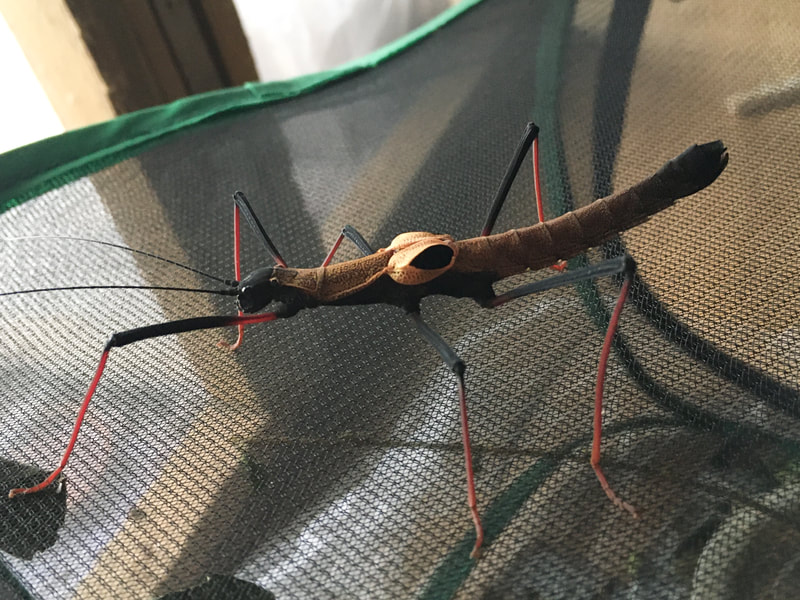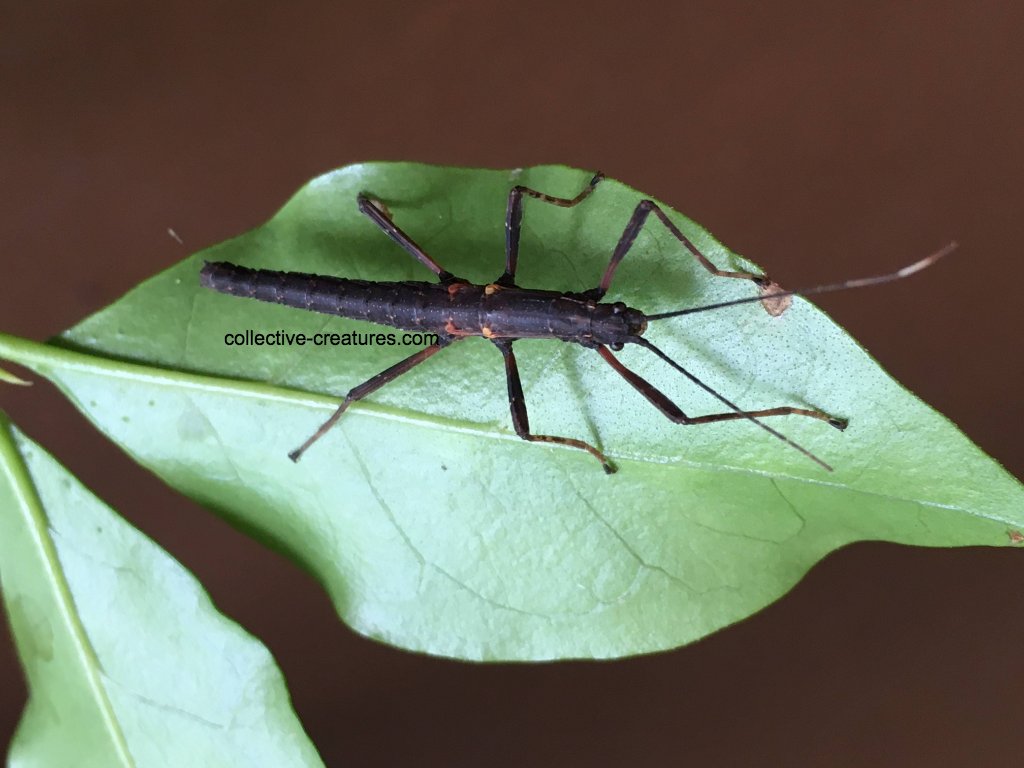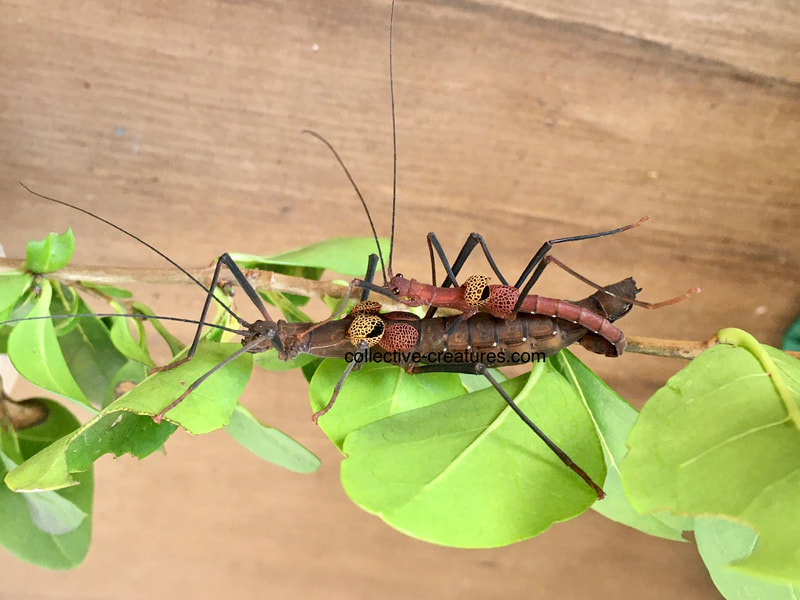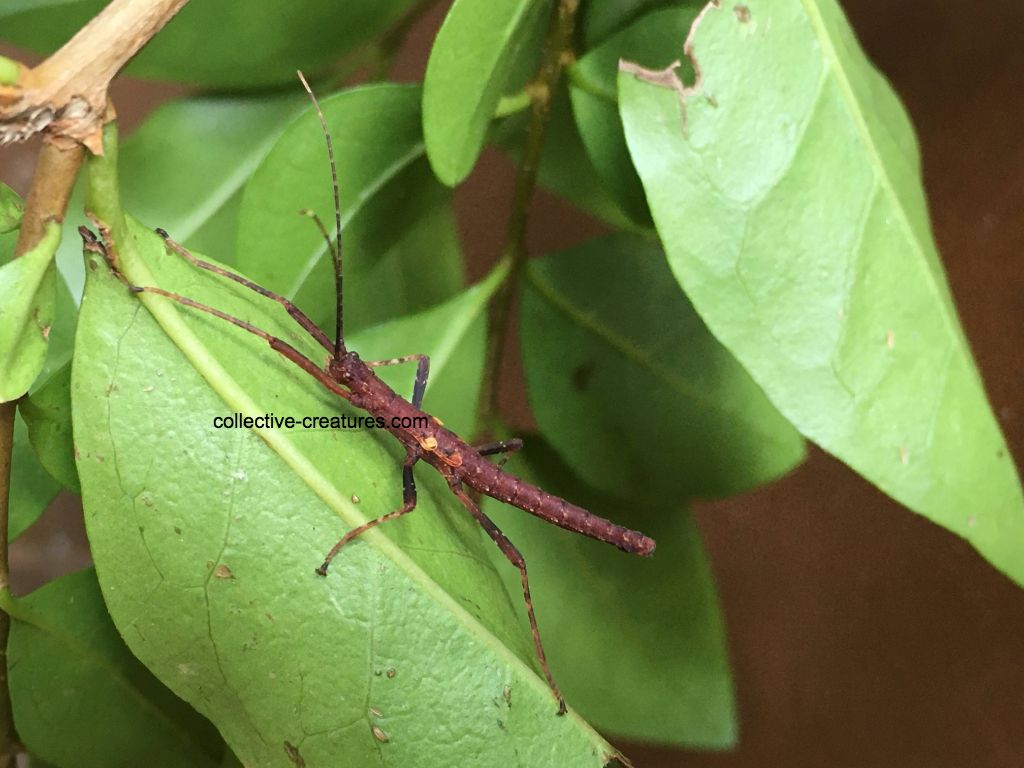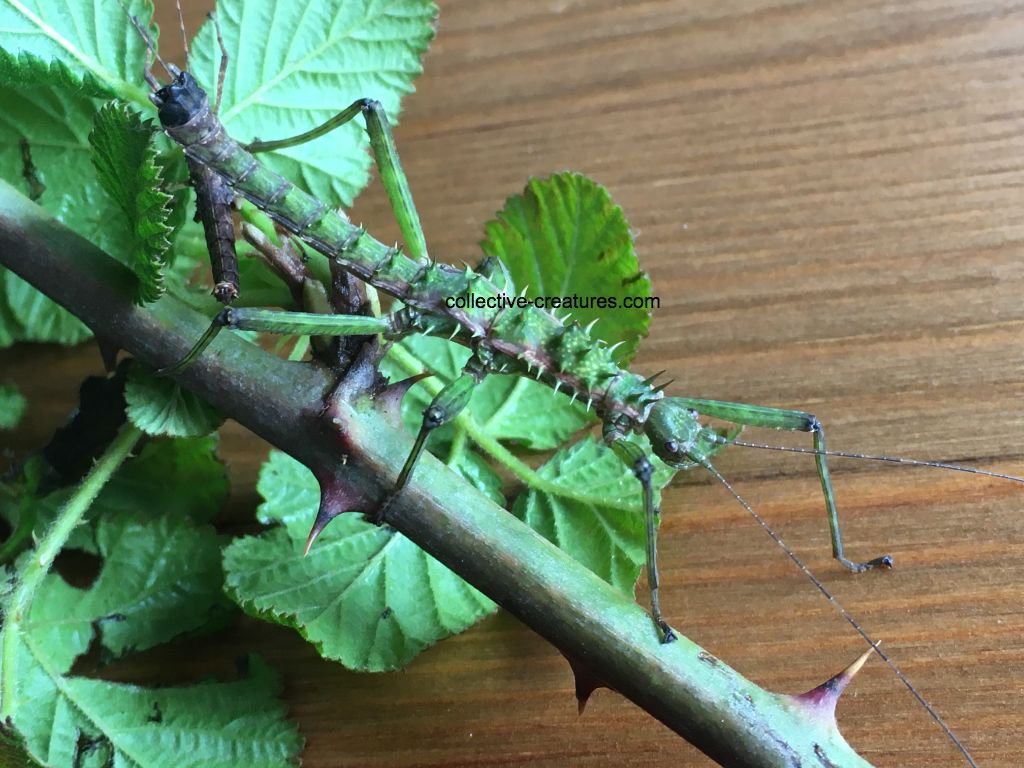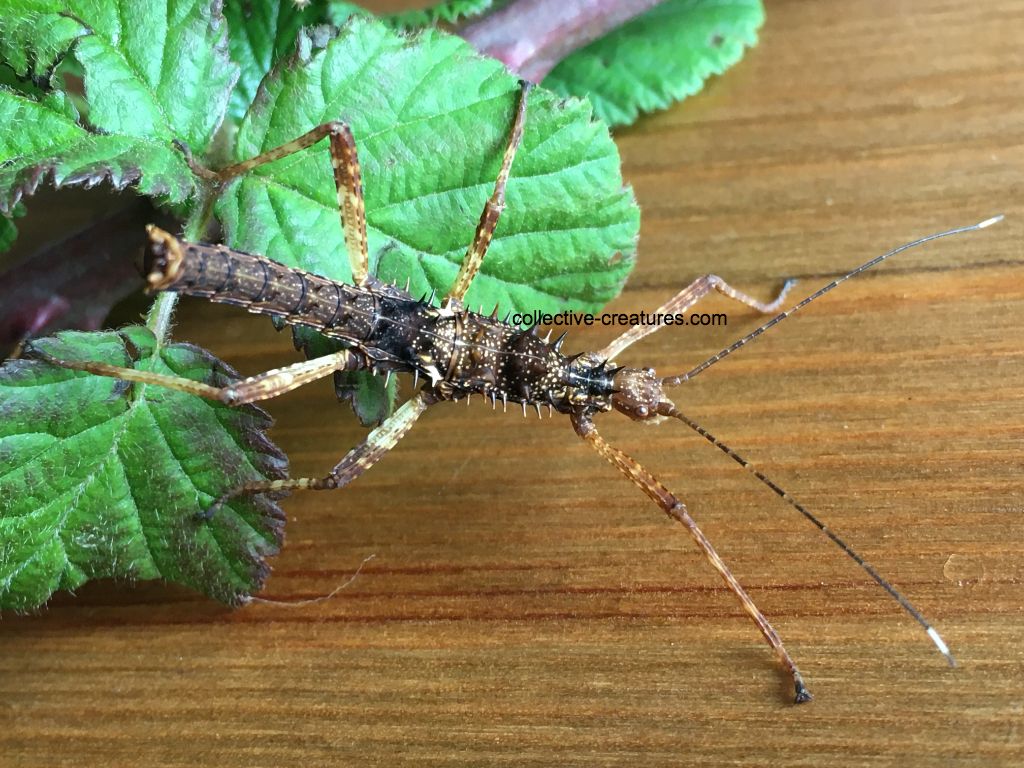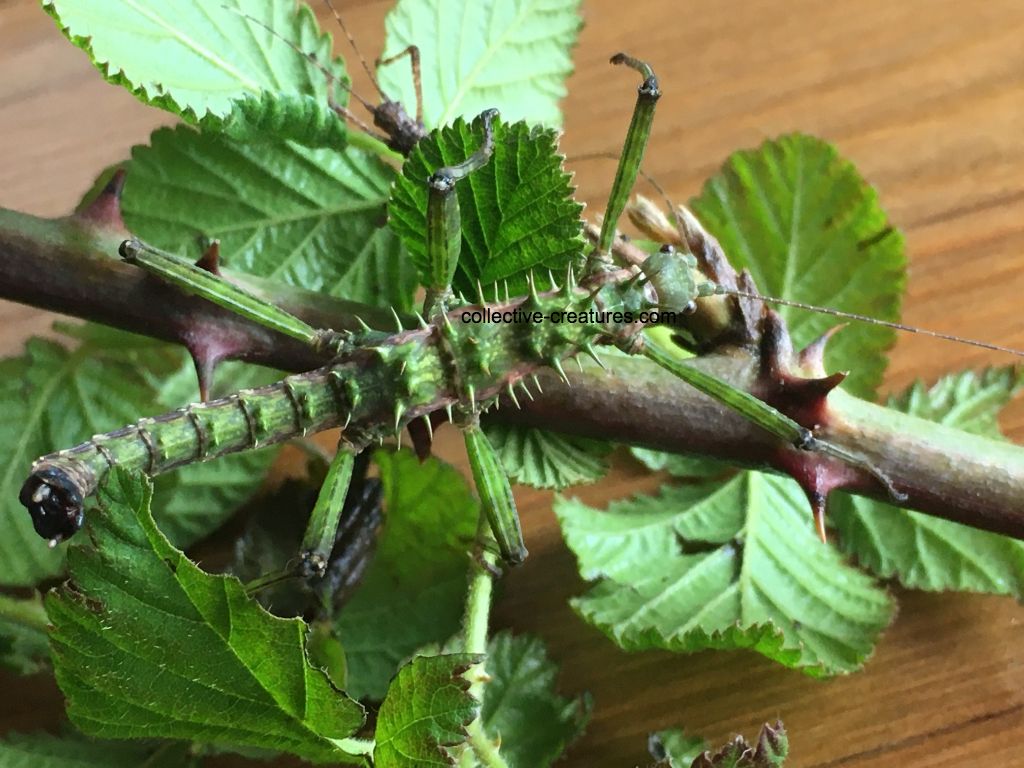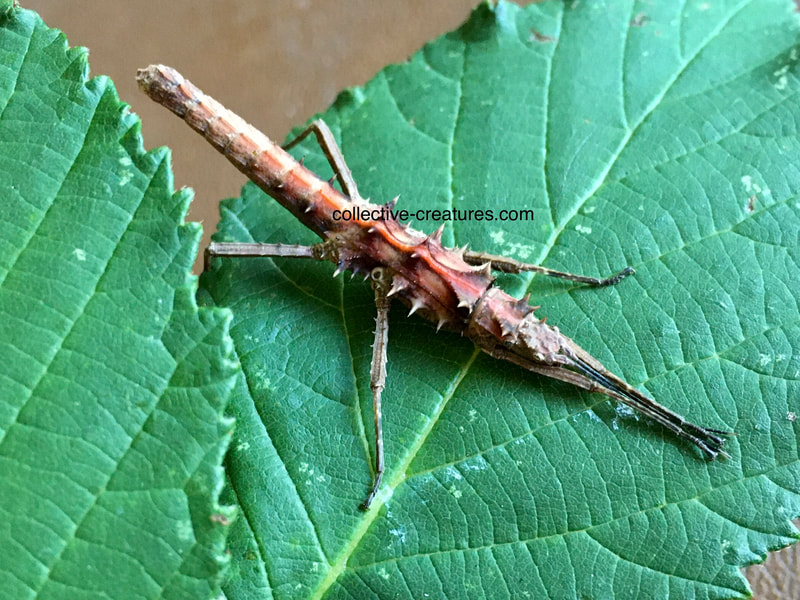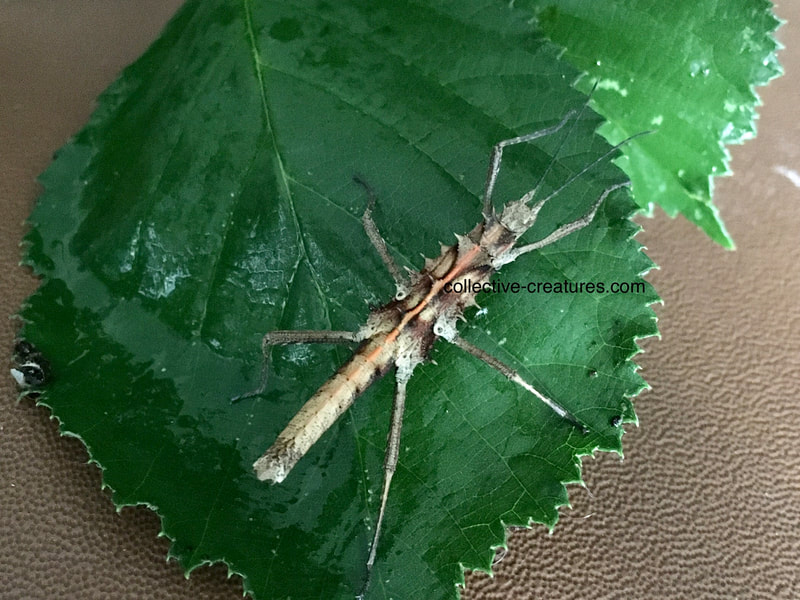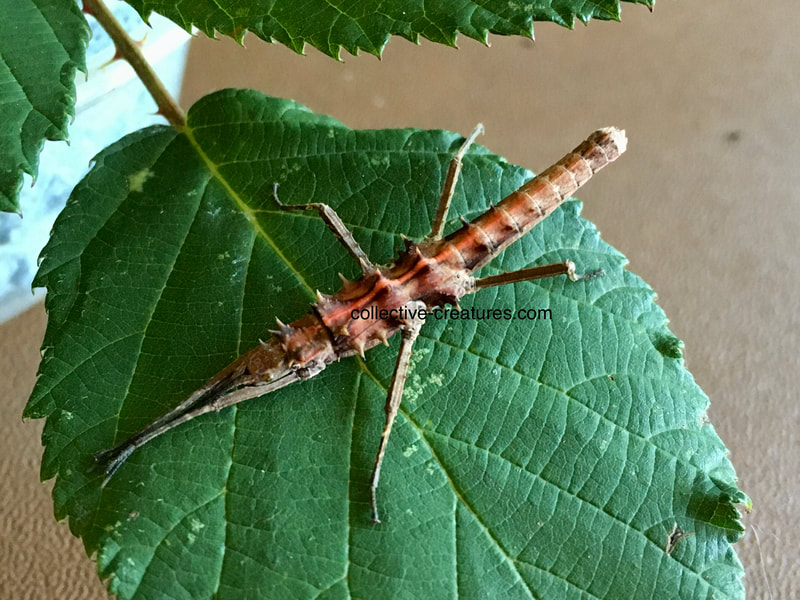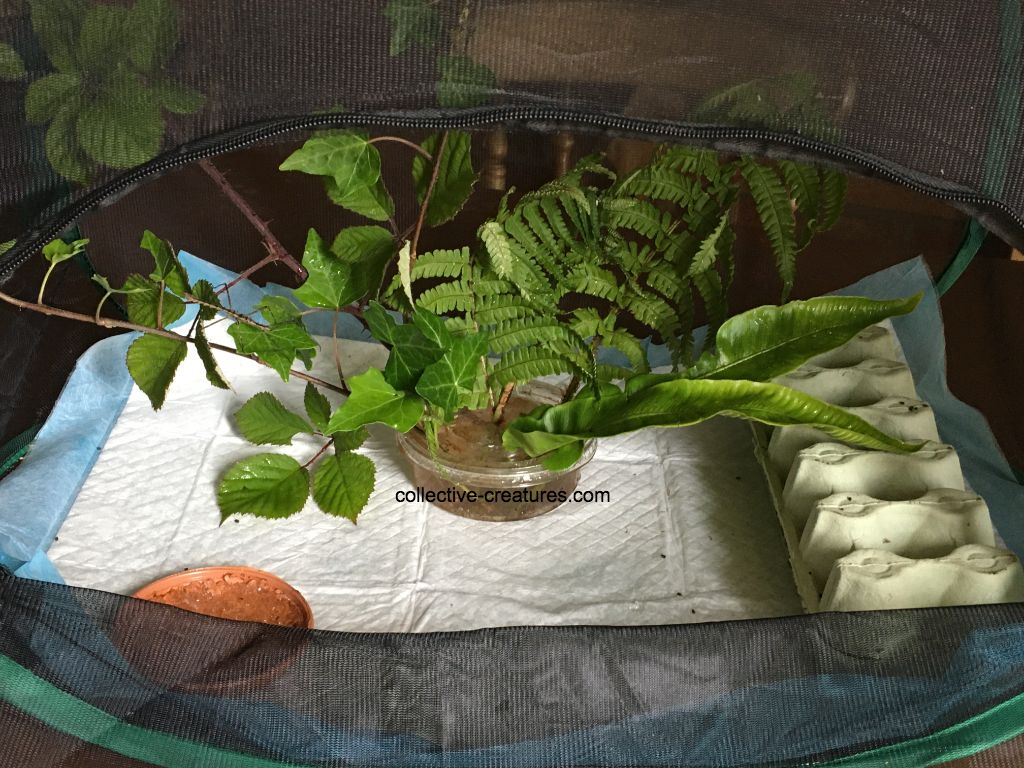Phasmids
We keep all of our phasmids at around 22*C
All of our phasmids have been sourced from experienced breeders in the U.K and Europe and have originated from the locations stated, I do not mix stock from different locations.
All of our breeding groups consist of both males and females - unless stated below.
Anarchodes annulipes 'Tapah Hills' - PSG 290
Tapah Hills, Malaysia
Adult Size: females 9cm / males 6cm
Food Plants: Privet, Lilac, Osmanthus burkwoodii.
Has wings - can fly.
Females prefer to lay eggs in cracks, gaps & holes (polystyrene, floristry oasis or a sponge works well)
Andropromachus scutatus 'Tam Dao" - PSG 328
Vietnam
Adult Size: females: 6 - 7cm / males 5cm
Food Plants: Ferns & Ivy.
We keep a cardboard egg box with the front taken off in the bottom of the cage for them to use as a cave which they seem to enjoy.
Autolyca herculeana 'Tegucigapla' - PSG
Honduras
Adult Size: females 6cm / males 5cm
Food Plants: Privet, Salal
We keep a cardboard egg box with the front taken off in the bottom of the cage for them to use as a cave which they seem to enjoy.
Bacillus rossius - PSG 3
Europe
Adult Size: females: 7cm / males 5cm
Food Plants: Bramble, Rose
A pretty phasmid with green & pink colouring, being a european species they do prefer cooler temperatures
- we keep ours at around 12 - 22*C depending on time of year.
Clonaria conformans - PSG 225
Thailand
Adult Size: females 9cm / males 6cm
Food Plants: Brambles.
A graceful looking & peaceful species that sticks grass seed shaped eggs to the sides of the cage.
Going through a range of creams & greens as they mature makes them a good species if you prefer something colourful.
Extatosoma Tiaratum 'Innisfail' - PSG 9a
Australia
Adult Size: females 12cm / males 9cm
Food Plants: Brambles, Eucalyptus
An extremely large and hungry species, the winged males are usually shades of brown but the females can vary from pale green to rich red-brown (or even the lichen morph colour form) depending on cage backgrounds & leaf colours. They will try to blend in with their environment from hatching as they shed & mature.
Hemiplasta falcata ‘Peleng Island’
Sulawesi
Adult Size: females 8cm / males 5cm
Food Plants: Hypericum
Lamachodes sp. 'Bokor'
Cambodia
Adult Size: females 9cm males 6cm
Food Plants: Privet
Absolutely gorgeous species in brown, green & yellow, the males have wings & can fly.
Lobofemora scheirei 'Cat Tien' - PSG 379
Vietnam
Adult Size: females 8cm / males 6cm
Food Plants: Bramble & Beech
Females prefer to lay eggs in cracks, gaps & holes (polystyrene, floristry oasis or a sponge works well)
Mearnsiana bullosa “Mt. Apo”
Mt. Apo (Mindanao, Philippines)
Adult Size: females 9cm / males 5cm
Food Plants: Bramble & Beech
Medauromorpha regina 'Tay Yen Tu'
Vietnam
Adult Size: females 11cm / males 7cm
Food Plants: Brambles, Hawthorn & Oak
Neohirasea maerens - PSG 173
Vietnam
Adult Size: females 8cm / males 6cm
Food Plants: Bramble & Ivy
Nui Chua rabaeyae - PSG 395
Vietnam
Adult Size: females 10cm / males 6cm
Food Plants: Brambles & Hypericum
Males from this species will stay mated to a chosen female for the rest of their lives.
Depending on environment & sunlight, this species can be quite vibrant with the beautiful green & purple colouring.
Pseudophasma scabriusculum ‘Panguana’
Peru
Adult Size: females / males
Food Plants: Privet & Plantago sp.
Pseudophasma subapterum - PSG 299
Venezuela
Adult Size: females 6cm / males 4.5cm
Food Plants: Privet & Plantains
A small but very pretty species, we keep a cardboard egg box with the front taken off in the bottom of the cage for them to use as a cave which they seem to enjoy.
Spinohirasea bengalensis 'Bach ma’ - PSG 272
Vietnam
Adult Size: females 6cm / males 4cm
Food Plants: Brambles, Ferns & maybe Privet
Tisamenus sp. ‘Palaui’
Philippines
Adult Size: females / males
Food Plants: Brambles, Ivy & Hypericum.
All of our phasmids are kept in separate cages with either a puppy training liner or ‘blue roll’ in the bottom & have a small plant saucer containing water gel crystals, most of our species will find & use the water dish.
|
